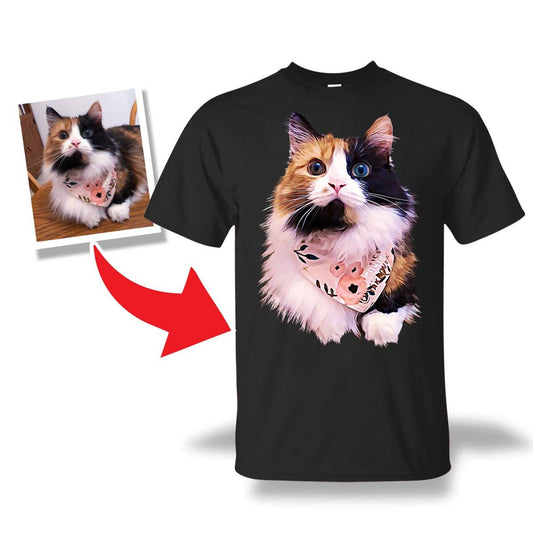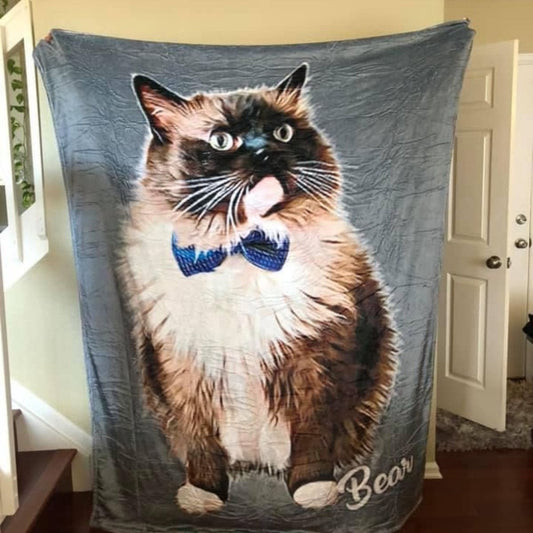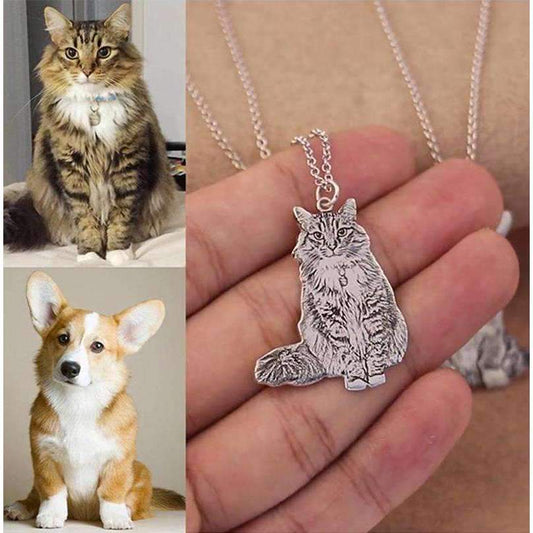The quest to understand the genetic markers of purebred cats is a journey that intertwines science, technology, and the art of breeding. This exploration delves into the intricate patterns of inheritance, the advancements in DNA testing, and the ethical considerations that come with breeding practices. It's a narrative that not only shapes the future of feline breeds but also ensures their health and vitality for generations to come.
Key Takeaways
- Genetic markers play a crucial role in identifying and preserving the unique characteristics of purebred cats, with DNA testing being a pivotal tool for breeders.
- Understanding inheritance patterns and utilizing DNA testing can lead to more responsible breeding practices, reducing the prevalence of hereditary diseases.
- Developments in DNA testing technology, such as oral health and whole genome tests, provide breeders with deeper insights into feline genetics.
- Early detection of genetic conditions through DNA tests benefits the health of purebred cats and aids breeders and veterinarians in making informed decisions.
- Educational resources and community engagement are essential for breeders to stay informed and to share knowledge about genetic markers and breeding practices.
The Role of Genetics in Cat Breeding

Understanding Inheritance Patterns
In the realm of purebred cat breeding, understanding inheritance patterns is crucial for predicting and maintaining desired traits within a breed. Genetic inheritance follows specific patterns, which are often predictable and can be utilized to enhance the breeding process. For instance, certain coat colors and patterns are inherited in a simple Mendelian fashion, where dominant and recessive genes play a clear role.
However, not all traits are straightforward. Polygenic traits, such as size and temperament, are influenced by multiple genes and environmental factors, making their inheritance more complex. Breeders must consider these nuances when selecting mating pairs to ensure the health and standard of the breed.
DNA testing has become an invaluable tool for breeders, allowing for the identification of genetic markers associated with both desirable and undesirable traits. When issues arise or variations in DNA are detected, it doesn't mean the cats aren't candidates for breeding, but rather that breeders need assistance in interpreting the results to make informed decisions. Working through these cases can be intricate but ultimately rewarding.
The Cat Owner Basics guide empowers responsible ownership, providing tips on choosing the right cat, including adoption benefits and breed selection considerations for a harmonious match.
The Impact of DNA Testing on Breeding Practices
The advent of DNA testing has revolutionized the way breeders approach the propagation of purebred cats. By identifying carriers of genetic disorders, breeders can make informed decisions to prevent the spread of these conditions to future generations. DNA testing serves as a critical tool in maintaining the health and integrity of purebred cat lineages.
Breeding practices have evolved from a reliance on pedigree and physical traits to a more scientific approach that includes genetic screening. This shift has allowed for the selection of breeding pairs not only for their aesthetic qualities but also for their genetic health.
The interpretation of DNA test results is crucial for breeders. It enables them to understand inheritance patterns and make responsible breeding decisions, even when variations in DNA are identified.
Here is a brief overview of how DNA testing impacts breeding practices:
- Identification of genetic markers: Breeders can pinpoint specific genetic markers that are characteristic of the breed.
- Health screening: DNA tests screen for hereditary diseases, allowing breeders to avoid passing on detrimental genes.
- Informed pairing: With genetic information, breeders can select mates that will enhance genetic diversity and reduce the risk of inherited conditions.
- Professional guidance: Breeders often require assistance to interpret complex DNA results and to develop breeding strategies that are both ethical and beneficial for the breed's future.
Responsible Breeding and Genetic Screening
Responsible breeding practices are essential for maintaining the health and vitality of purebred cats. Genetic screening plays a pivotal role in identifying potential hereditary conditions and ensuring that breeding pairs are well-matched to prevent the propagation of genetic diseases. Breeders, equipped with a deep understanding of genetics, are able to make informed decisions about which cats to breed together.
DNA testing has become an integral tool for breeders, allowing them to screen for specific traits and diseases. The availability of genetic tests for diseases, coat length, colors, and other traits has revolutionized breeding strategies. By utilizing these tests, breeders can identify carriers of certain alleles and plan breedings that minimize the risk of affected offspring.
It is crucial for breeders to prioritize the health of their cats over other considerations. A responsible approach to breeding includes not only genetic testing but also considering the overall well-being of the animals involved.
Breeders must remain up-to-date with the latest advancements in genetic testing and continuously educate themselves on best practices. Engaging with the breeding community and veterinary professionals can further enhance responsible breeding efforts.
Decoding Genetic Markers in Purebred Cats

Identifying Breed-Specific Genetic Markers
The quest to identify breed-specific genetic markers in purebred cats is a cornerstone of modern feline genetics. Breeders rely on these markers to ensure the purity and health of their lines. By analyzing a cat's DNA, breeders can determine the presence of specific traits that are characteristic of a particular breed. This not only aids in confirming a cat's pedigree but also in making informed breeding decisions to maintain breed standards.
For instance, certain coat patterns, ear shapes, and tail lengths are indicative of specific breeds. A cat with a short tail may suggest a link to certain purebred lineages. Similarly, eye color and personality traits can also serve as clues to a cat's breed heritage. DNA testing has become an invaluable tool for breeders, allowing for a more precise understanding of a cat's genetic makeup.
The integration of DNA testing into breeding practices has revolutionized the way breeders approach the preservation of breed traits. It provides a scientific basis for making breeding choices that can enhance the breed's genetic health and diversity.
While visual identification can offer hints, DNA testing provides a definitive answer to a cat's breed composition. Dr. Delgado emphasizes the utility of DNA testing for accurate breed identification. As the science of genetics advances, the ability to pinpoint breed-specific markers continues to improve, offering breeders and cat enthusiasts a deeper insight into the rich tapestry of feline genetics.
The Science Behind Ancestry Algorithms
Ancestry algorithms in purebred cat DNA testing function similarly to a search engine, utilizing genetic markers as search terms to sift through extensive reference panel data. The precision of these algorithms is crucial for identifying a cat's breed heritage accurately. Different testing services may yield varying results due to the unique reference panels and algorithms they employ, as well as the specific genetic variants they analyze.
The accuracy of breed identification through DNA testing hinges on the sophistication of the ancestry algorithm and the breadth of the reference panel used.
Understanding the components of these algorithms can be broken down into several key elements:
- Reference Panels: Collections of DNA from known purebred cats that serve as a comparison point.
- Genetic Markers: Specific DNA sequences used to trace lineage and breed characteristics.
- Algorithms: Computational methods that analyze genetic markers against reference panels to determine ancestry.
These elements work in concert to provide insights into a cat's genetic background, which can be essential for breeders in making informed decisions about breeding pairs and for owners curious about their cat's lineage.
Reference Panels and Their Importance
Reference panels serve as a crucial foundation in the world of genetic testing for purebred cats. These panels consist of DNA samples from known purebreds, which are used as a benchmark to determine a cat's lineage. The accuracy of DNA testing hinges on the breadth and quality of the reference panel used. This is because the panel's diversity directly influences the test's ability to correctly identify breed-specific genetic markers.
The process of DNA testing is akin to solving a complex puzzle where each piece represents a segment of DNA. To accurately place these pieces, a comprehensive reference panel is indispensable. For instance, Wisdom Panel boasts a substantial database, which facilitates the identification of a wide array of breeds, enhancing the precision of ancestry trees.
It's important to note that different DNA tests may yield varying results due to the distinct reference panels they employ, the algorithms used to analyze the data, and the specific genetic variants they consider. This variability underscores the need for breeders to select DNA testing services that maintain extensive and well-curated reference panels.
DNA Testing Technologies and Their Applications

Comparing Different DNA Testing Products
When selecting a DNA testing product for purebred cats, breeders face a variety of options, each with its own set of features and claims of accuracy. It is crucial to understand that not all DNA tests are created equal, and differences in technology and genetic databases can lead to varying results. For instance, some tests may use more advanced sequencing technologies or have more comprehensive breed-specific genetic markers in their reference panels.
- Embark and Wisdom Panel are among the popular choices, known for their breed identification capabilities.
- Viaguard Accu-Metrics, while also used, may offer different insights due to its unique database.
Breeders should carefully consider the methodology and database coverage of DNA testing products to ensure the most reliable results for their breeding programs.
Accuracy claims made by DNA testing companies are often based on internal evaluations and may not have been independently verified. As such, breeders are encouraged to conduct thorough research and possibly seek reviews or studies that compare the efficacy of different products.
The Evolution of Oral Health and Whole Genome Tests
The landscape of feline DNA testing has seen significant advancements, particularly in the areas of oral health and whole genome sequencing. Oral health tests for cats have become a vital tool for breeders, enabling them to identify potential dental issues before they become problematic. Meanwhile, whole genome tests offer a comprehensive look at a cat's genetic makeup, providing insights that go beyond the scope of traditional testing methods.
The integration of these tests into routine breeding practices has revolutionized the way breeders approach genetic health and disease prevention.
The following table compares key features of the two types of tests:
| Test Type | Genetic Coverage | Health Insights | Breeder Use Case |
|---|---|---|---|
| Oral Health Test | Targeted | Dental Health | Early Detection |
| Whole Genome Test | Comprehensive | Broad Spectrum | In-depth Analysis |
As breeders continue to adopt these technologies, the potential for improving the health and well-being of purebred cats is immense. It is a testament to the ongoing commitment within the breeding community to prioritize the health of their feline companions.
Interpreting DNA Testing Results for Breeders
Interpreting DNA test results is a critical step for breeders in making informed decisions about their breeding programs. Understanding the genetic makeup of breeding cats is essential for maintaining the health and vitality of future litters. It's not uncommon for breeders to encounter variations in DNA that require careful consideration and expert guidance to interpret.
- Variations in DNA results do not automatically disqualify a cat from breeding.
- Expert interpretation can lead to smart breeding decisions.
- In-depth cases are complex but manageable with time and expertise.
When interpreting DNA results, breeders must consider the implications of each genetic marker and how it may affect the overall health and lineage of their cats. This process often involves collaboration with geneticists and veterinarians to ensure the best outcomes for the breed.
It is also important to recognize that DNA testing technologies and databases are constantly evolving. Breeders should stay informed about the latest advancements and understand that different DNA tests may yield varying results due to differences in sequencing technologies and reference populations.
Genetic Health and Disease Prevention

Screening for Hereditary Diseases in Cats
Screening for hereditary diseases is a critical component of maintaining the health and vitality of purebred cats. Breeders have been using DNA testing to identify cats that may pass on disease alleles to their offspring. This proactive approach allows for informed breeding decisions that can reduce the incidence of genetic disorders in future generations.
The Basepaws Cat DNA Test Kit is an example of a tool that provides comprehensive breed, health, and dental analysis across 114 traits. Such tests offer genetic insights that are both accurate and easy-to-use, enabling breeders to make more responsible choices.
By utilizing DNA testing technologies, breeders can create personalized care and treatment plans for each cat, ensuring the best possible outcomes for their health.
Here is a list of services that may include genetic screening:
- Kitten Care
- Senior Cat Care
- Cat Cancer
- Cat Heartworms
- Cat Lab Tests
The Benefits of Early Detection Through DNA Tests
Early detection of genetic conditions through DNA tests can be a game-changer in the management and prevention of hereditary diseases in cats. By identifying potential health issues before they manifest, breeders and veterinarians can collaborate to devise personalized care plans that may significantly improve the quality of life for these felines.
The advantages of early detection include the ability to take proactive steps in disease management, such as implementing specific diets, monitoring for early signs of illness, and planning for any necessary medical interventions. This preemptive approach can lead to better outcomes and may even extend the lifespan of purebred cats.
With the rapid spread of viruses and other contagious diseases, early detection is crucial for cat survival. Protective measures during clinic visits and the availability of telemedicine services ensure continuous care for our feline companions, even in challenging circumstances.
In addition to health benefits, early genetic screening can also enhance the breeding process by ensuring the selection of healthy individuals for future generations, thus preserving the integrity of the breed.
Collaboration Between Breeders and Veterinarians
The collaboration between breeders and veterinarians is pivotal in advancing the health and genetics of purebred cats. Veterinarians bring a wealth of medical knowledge to the table, complementing the practical breeding experience of cat fanciers. This synergy is essential for interpreting DNA test results and making informed breeding decisions.
Breeders and veterinarians often engage in detailed discussions about the genetics of physical traits, such as coat colors, which can be complex. Understanding these traits requires a blend of real-life breeding knowledge and scientific insight.
The dialogue between the two parties typically begins with the veterinarian learning about the breeder's program. This exchange of information helps in tailoring health strategies to the specific needs of each breed. For instance, even cats at risk for genetic conditions can be part of a responsible breeding program if paired correctly, ensuring the condition is not exacerbated.
Here is a list of collaborative actions that breeders and veterinarians can take to enhance the genetic health of purebred cats:
- Discussing the implications of DNA test results
- Planning responsible breeding strategies
- Monitoring the health of breeding cats and their offspring
- Educating each other on breed-specific genetic language
- Sharing knowledge on the latest genetic testing technologies
Educational Resources and Community Engagement

Accessing the Cat Library for Breed Information
The Cat Library serves as a comprehensive resource for breeders and cat enthusiasts seeking detailed information on various cat breeds. Access to a wealth of knowledge is just a few clicks away, with the library offering insights into breed-specific traits, health concerns, and genetic markers.
The library is intuitively organized, allowing users to easily navigate through sections dedicated to cat breeds, diseases, and soon-to-be-added traits. This structured approach ensures that breeders can quickly find the information they need to make informed decisions about their breeding programs.
For those new to the Cat Library, here's a simple guide to get started:
- Visit the Cat Library section on the website.
- Select 'Cat Breeds' to explore the comprehensive list of breeds.
- Dive into detailed profiles for insights on genetic health, physical traits, and breed history.
- Keep an eye on the 'Soon' sections for upcoming information on cat traits and more.
By leveraging the Cat Library, breeders can enhance their understanding of genetic markers and pathways, contributing to the breeding of healthier and well-tempered cats.
Staying Informed with Cat Insider and Blogs
In the dynamic world of purebred cat breeding, staying updated with the latest information is crucial. Cat Insider and various blogs offer a wealth of knowledge, from health advice to breeding tips. For instance, The Feline Purrspective Blog emphasizes the importance of discussing your cat's vaccination needs with a veterinarian, highlighting that rabies vaccines are generally safe for most cats.
Engaging with these resources regularly can help breeders and cat enthusiasts make informed decisions and stay abreast of new developments in the field.
The following list outlines some key categories and topics you might encounter on these platforms:
- Cat behavior and wellness
- Emergency care and disease prevention
- Nutrition and diet specifics
- Breed-specific information and traits
- Updates on DNA testing products and interpretation
Each category provides insights that can contribute to the overall well-being and longevity of purebred cats.
Leveraging Video Features for Enhanced Learning
In the digital age, video content has become a cornerstone for education in various fields, including feline genetics. Breeders and enthusiasts can now deepen their understanding of purebred cats through a range of video resources. These videos often break down complex genetic concepts into digestible segments, making it easier for viewers to grasp the intricacies of cat DNA.
For instance, educational series may include episodes on topics such as 'Inheritance Patterns for Breeders' or 'The Science of Dog DNA', which, while focused on canines, share principles applicable to feline genetics as well. A typical video series might be structured as follows:
- EP: 1. Introducing Key Experts
- EP: 2. Health Benefits of DNA Testing
- EP: 3. Finding Genetic Markers
- EP: 4. The Relative Finder Tool
- EP: 5. Inheritance Patterns
- EP: 6. DNA Testing Results
- EP: 7. Behind the Science
By incorporating video tutorials and expert interviews into their learning regimen, breeders can stay at the forefront of genetic research and apply this knowledge to their breeding programs.
Moreover, video features allow for the visualization of genetic data, which can be particularly helpful when interpreting DNA testing results or understanding the role of specific genetic markers. The interactive nature of video content also facilitates community engagement, encouraging breeders to discuss and share insights on platforms like YouTube or specialized forums.
Conclusion
In the intricate world of purebred cats, understanding genetic markers is not just a scientific pursuit but a cornerstone of responsible breeding. Experts like Adam Christman, DVM, MBA, and Lindsey Kock, DVM, emphasize the importance of breeders being conversant with the genetic language of their breeds to ensure the health and vitality of their lines. DNA testing, as highlighted by Jenna Dockweiler, MS, DVM, DACT, CCRT, CVAT, has become an invaluable tool for breeders, enabling them to identify potential hereditary diseases and make informed decisions. However, as Foran notes, the accuracy of these tests relies heavily on the reference panels, algorithms, and genetic variants considered. The insights shared by veterinarians and geneticists in this article underscore the need for continued research and collaboration between breeders and professionals to refine DNA testing methods and promote the welfare of purebred cats.
Frequently Asked Questions
What is the significance of understanding genetics in cat breeding?
Understanding genetics in cat breeding is crucial for responsible breeding practices. It allows breeders to identify and manage hereditary diseases, select desirable traits, and maintain the health and diversity of purebred cat populations.
How do DNA tests impact cat breeding practices?
DNA tests provide breeders with detailed information about a cat's genetic makeup, enabling them to screen for genetic diseases, predict inheritance patterns, and make informed breeding decisions to produce healthy offspring.
What are breed-specific genetic markers in cats?
Breed-specific genetic markers are unique sequences of DNA that are characteristic of a particular cat breed. These markers help in identifying the breed's lineage and confirming purebred status.
Why are reference panels important in DNA testing for cats?
Reference panels are databases of genetic information from known purebred cats. They are essential for accurately determining a cat's ancestry and identifying breed-specific genetic markers through DNA testing.
Can DNA testing for cats detect potential health issues?
Yes, DNA testing can identify genetic predispositions to certain hereditary diseases, allowing for early intervention and management strategies to prevent or mitigate health issues in cats.
How can breeders and veterinarians collaborate for the health of purebred cats?
Breeders and veterinarians can work together by sharing knowledge about breed-specific genetics, utilizing DNA testing for health screening, and creating personalized care plans to ensure the well-being of purebred cats.




